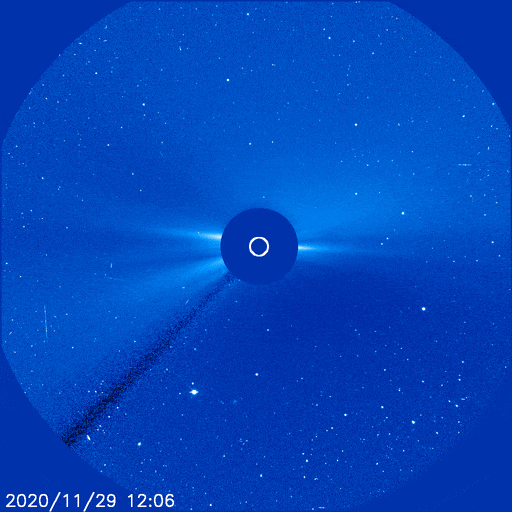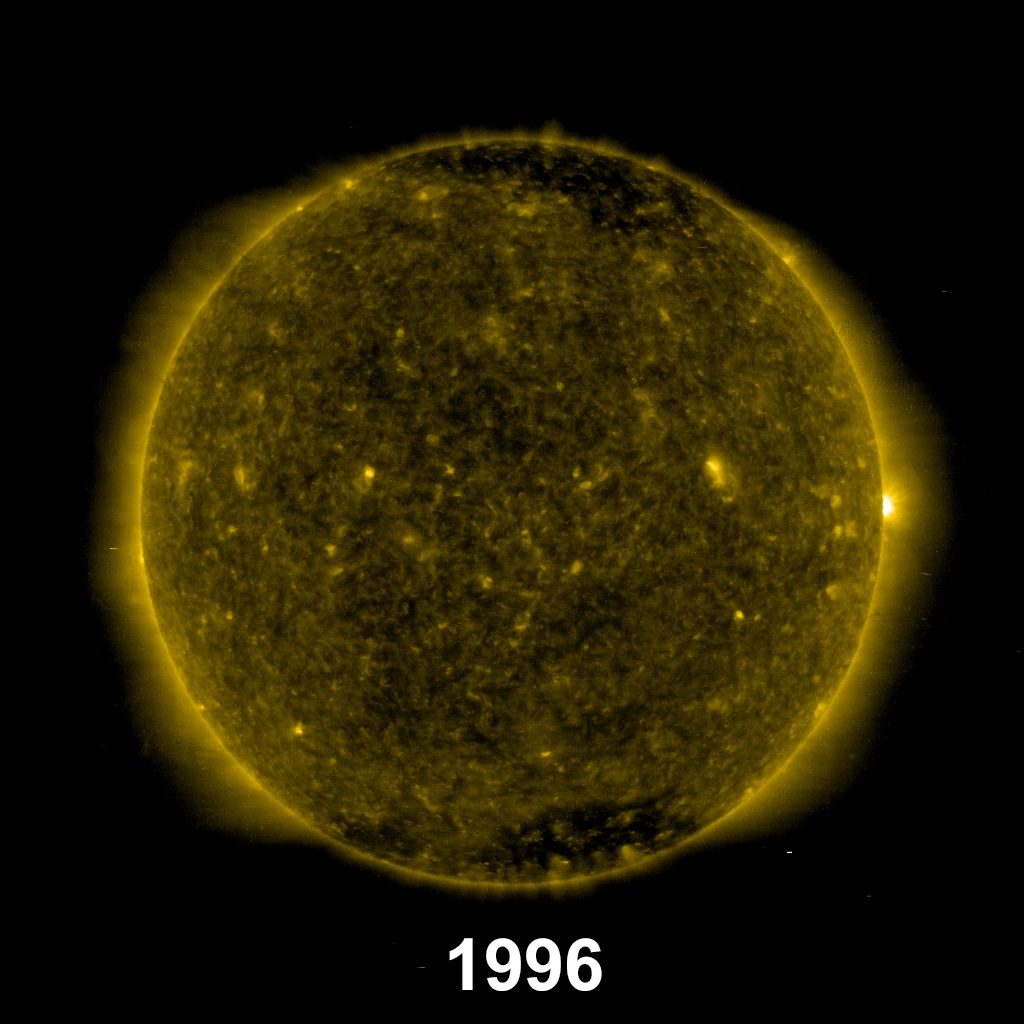Two and a half decades of scientific discovery is a major milestone for any space mission. But when the spacecraft at the heart of the celebration was only designed to last for two years, and operates from an area outside the Earth’s protective magnetosphere, it’s an unalloyed triumph in the history of space exploration.
SOHO launched on 2 December 1995. It is stationed 1.5 million kilometres closer to the Sun than the Earth, from where it enjoys uninterrupted views of our star.
The mission was launched with three scientific objectives in mind. The first was to study the dynamics and structure of the solar interior. The second was to study why the Sun’s outer atmosphere, known as the corona, is so much hotter than its surface, and the third was to study where and how the solar wind of particles is accelerated.
Almost 6000 papers have now appeared in refereed journals based on SOHO data, many of them representing significant progress in our understanding of the original objectives.
In addition to investigating how the Sun works, SOHO is the most prolific discoverer of comets in astronomical history, having spotted more than 4000 of these icy mini-worlds during the sunward leg of their journeys.
But perhaps the most important aspect of SOHO’s work has been something that was only just coming to prominence at the time of its launch: the study of space weather.
Space weather is the term for disturbances in the solar wind; the constant stream of electrically charged particles expelled from the Sun’s corona. Major events in the corona, known as coronal mass ejections, or CMEs, can propel billions of tonnes of these particles out into space at millions of kilometres per hour.
If Earth lies in the path of a CME, it can trigger a major geomagnetic storm, in which satellites may be damaged, telecommunications disrupted, astronauts endangered and power lines subjected to dangerous surges in electrical currents. Together these events and their consequences have been colloquially termed solar storms.
“The reason why SOHO is flying now is for space weather research – to understand how the Sun impacts the earth,” says Bernhard Fleck, ESA’s SOHO project scientist and mission manager.
SOHO has been a game changer in the study of space weather because it plays a vital role in forecasting potentially dangerous solar storms. This is because SOHO carries the Large Angle and Spectrometric Coronagraph (LASCO) instrument, which studies the structure and behaviour of the tenuous corona by creating an artificial solar eclipse. By doing this, operators and space weather forecasters on Earth can see when solar storms are heading our way, one to three days before they arrive.
There have been a number of other solar missions launched since SOHO. For example, NASA launched the Solar Dynamics Observatory and most recently Parker Solar Probe. For its part, ESA now has Solar Orbiter. And yet SOHO remains unique because it carries the only coronagraph on the Sun-Earth line, and this makes it invaluable.
SOHO’s 25-year mission has not been without incident. Two and a half years after launch, on 25 June 1998, the mission almost ended during a routine spacecraft manoeuvre. Contact was lost and some wrote off SOHO as lost for good. However, the team refused to surrender, and after painstaking work over a three month period, they managed to bring the mission back online by the end of September.
Following a period of re-commissioning the spacecraft and its twelve instruments – all of which survived despite the extreme temperatures they suffered during the blackout – the mission was fully back online in early November. But the troubles were not over yet.
By the end of the next month, all three of the spacecraft’s gyroscopes had failed, igniting a new race against time to save the mission.
New software was developed that could control SOHO without the need of gyroscopes. Installed in February 1999, the code allowed the spacecraft to return once more to full scientific operations. In the process, this made SOHO the first spacecraft to be stabilised in three axes without gyroscopes.
Despite these problems, SOHO has remained a stalwart on the ESA roster ever since. Engineers have kept the spacecraft healthy and functioning, with all its instruments performing well, and providing there are no major malfunctions in the coming years, the spacecraft could make it to its 30th anniversary.
Bernhard believes that SOHO’s mission will end in 2025 after a couple of successor missions have taken to the skies. One is the so-called Space Weather Follow-On mission from the National Oceanic and Atmospheric Administration (NOAA), the other is NOAA’s GOES-U satellite. Both carry coronagraphs and space weather monitoring instruments that look set to take over from SOHO.
ESA too has new missions on the horizon. It is studying the Lagrange mission, which would function as a dedicated space weather observatory to warn of potentially harmful turbulence in our parent star. In the shorter term, ESA’s Proba-3 is aiming for launch in 2023. This satellite will test a new way of studying the Sun’s corona that significantly improves on the performance of traditional coronagraphs. Decades of the Sun, as seen by SOHO
But before then, there is still a lot of great science to look forward to from SOHO. “I would say the next couple of years will be more exciting than the previous ten years,” says Bernhard.
This is because SOHO can integrate its readings with those from Solar Orbiter and Parker Solar Probe to provide ‘multipoint measurements’ that give a more complete picture of the space weather conditions. For example, SOHO can see the corona through which those two missions will fly, thus providing the context into which Solar Orbiter’s and Parker Solar Probe’s ground truths can be fitted.
And it is not just the scientific achievements that are being celebrated on this anniversary. SOHO’s longevity is a lasting testament to the teams of dedicated individuals who built the spacecraft and its instruments three decades ago. “The world was very different 30 years ago, yet they built such a solid piece of hardware that it still works, and has instruments that are still relevant, 30 years later. That is quite amazing,” says Bernhard.
Then, of course, there is the team that runs the spacecraft. “They have operated the mission day in and day out for 25 years, even in the difficult conditions of the COVID-19 pandemic over the last year, it is such an extraordinary achievement,” says Bernhard.
Especially since technology continually changes, and so the team is required to keep adapting their practises to modern requirements. “SOHO is based on their commitment, dedication and diligence,” says Bernhard.
In short, SOHO has not only changed the way we think about the Sun, through the amazing bounty of knowledge and understanding it has provided, but it has also established the blueprint for how we study space weather in order to keep Earth and its technology safe.
No matter when the mission eventually comes to an end, its place in the history books is secure.








